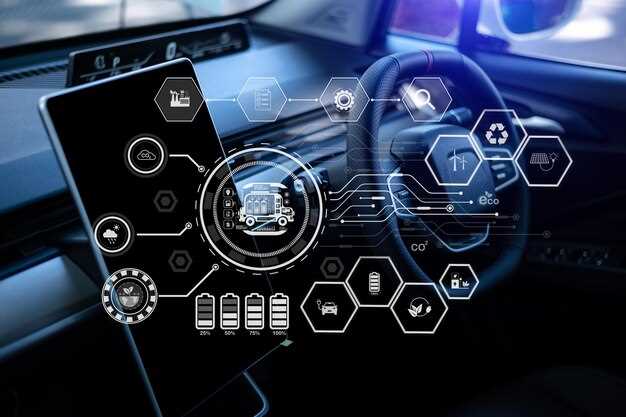
The evolution of artificial intelligence (AI) has brought about a transformative shift in the tech landscape, particularly in the field of modern vehicle systems. This integration of advanced technology has redefined how we perceive and interact with our vehicles, leading to unprecedented levels of automation and safety. AI algorithms process vast amounts of data collected from various vehicle sensors, enhancing decision-making processes in real-time and offering a range of functionalities that were once unimaginable.
Today, vehicles equipped with AI capabilities can monitor road conditions, predict potential hazards, and communicate with other vehicles and infrastructure systems. This not only improves individual driver safety but also contributes to the efficiency of transportation networks as a whole. As the automotive industry continues to embrace AI innovations, challenges such as data privacy and ethical considerations also emerge, making it imperative to address these issues alongside technological advancement.
The impact of AI on vehicle systems is profound, as it goes beyond mere enhancements in driving experience. It influences the entire lifecycle of a vehicle, from design and manufacturing to maintenance and end-of-life processes. As stakeholders across the industry grapple with these changes, the importance of fostering a collaborative approach between technologists, manufacturers, and regulatory bodies becomes increasingly critical to harness the full potential of AI in the automotive domain.
Enhancing Vehicle Safety Through AI-Powered Driver Assistance

Artificial intelligence has revolutionized the concept of vehicle safety by introducing advanced driver assistance systems (ADAS). These technologies leverage immense data and predictive intelligence to create a safer driving environment. By integrating real-time data collection and analysis, AI systems can identify potential hazards before they escalate into dangerous situations.
One notable feature of AI-powered driver assistance is lane-keeping assist, which utilizes cameras and sensors to monitor vehicle position within the lane. If a driver inadvertently drifts out of their lane, the system alerts them and can automatically steer the vehicle back on course, reducing the risk of collisions caused by driver inattention.
Another critical aspect of vehicle safety enhanced by artificial intelligence is adaptive cruise control. This system uses radar and camera technology to maintain a safe distance from the vehicle ahead. By automatically adjusting speed to match traffic flow, it minimizes the likelihood of rear-end accidents, contributing significantly to overall road safety.
Moreover, AI can aid in accident prevention through emergency braking assistance. By continuously scanning the road, the system can detect sudden stops or obstacles and apply brakes when necessary, even if the driver fails to react in time. This proactive approach dramatically lowers the chances of severe crashes, especially in urban environments where unexpected hazards are common.
The integration of intelligence within vehicle systems also extends to pedestrian and cyclist detection. Advanced algorithms analyze the movements of surrounding individuals, alerting drivers to potential dangers that may not be immediately visible. This feature is particularly beneficial in shared spaces, where interactions between vehicles and vulnerable road users are frequent.
In conclusion, the implementation of AI-powered driver assistance systems is a significant step toward enhancing vehicle safety. By employing artificial intelligence to monitor real-time conditions, these technologies provide critical support to drivers, reduce accident rates, and ultimately save lives on the road.
Optimizing Fuel Efficiency with Intelligent Engine Management Systems
The integration of artificial intelligence into modern vehicle systems has revolutionized how engine management operates. Intelligent Engine Management Systems (IEMS) are designed to optimize fuel efficiency by continuously analyzing various operational parameters. This use of intelligence allows vehicles to adjust their performance dynamically, ensuring that fuel consumption is minimized without sacrificing power or responsiveness.
One of the key components of IEMS is the ability to process real-time data from various sensors embedded throughout the vehicle. These sensors monitor factors such as engine temperature, air intake, and vehicle load. By leveraging this data, the system can make instantaneous adjustments to fuel injection rates, ignition timing, and air-fuel mixture. This precision ensures that the engine operates at its most efficient point under various driving conditions.
Furthermore, advanced algorithms powered by artificial intelligence can predict driving patterns and adapt engine parameters accordingly. For instance, if a vehicle is likely to encounter stop-and-go traffic, the system can optimize settings to enhance fuel efficiency during these conditions, ultimately reducing overall fuel consumption. This predictive approach offers substantial benefits over traditional engine management systems that typically rely on static settings.
Another important aspect of optimizing fuel efficiency is the integration of machine learning within IEMS. As vehicles collect more data over time, they can learn from driving habits and environmental conditions to refine their performance continually. This learning capability not only improves fuel efficiency but also extends the engine’s life by reducing wear and tear through optimized operational settings.
The combination of vehicle intelligence and artificial capabilities culminates in a smarter, more responsive engine management system that significantly enhances fuel efficiency. As we move towards a more energy-conscious future, the role of IEMS is becoming increasingly crucial in achieving sustainable vehicular performance.
Transforming User Experience with AI-Driven Infotainment Solutions

Artificial intelligence is fundamentally reshaping the way users interact with vehicle infotainment systems. By leveraging intelligent algorithms and data processing capabilities, modern infotainment solutions provide personalized and engaging experiences for drivers and passengers alike.
AI enhances the functionality of infotainment by integrating voice recognition, natural language processing, and contextual awareness. Users can effortlessly control navigation, music, and communication through simple voice commands, reducing distractions and allowing for safer driving. This tech not only simplifies interactions but also adapts to individual preferences over time, creating a tailored experience for each user.
Furthermore, AI-powered systems analyze driving habits and suggest relevant content, such as podcasts or music playlists that align with the driver’s mood or journey. Such intelligence fosters a seamless blend of entertainment and utility, ensuring that every road trip is enjoyable and efficient.
Real-time data integration is another significant advantage of AI-driven infotainment. These systems can access live traffic updates, weather forecasts, and event notifications, providing users with crucial information at their fingertips. The ability to predict and suggest optimal routes based on current conditions showcases the powerful capabilities of artificial intelligence in enhancing navigation and overall journey satisfaction.
As AI technology continues to evolve, we can expect even more sophisticated features, including advanced driver assistance systems that work in harmony with infotainment platforms. This integration promises to elevate the user experience beyond mere entertainment, transforming vehicles into intelligent environments that cater to every need of the driver and passengers.



